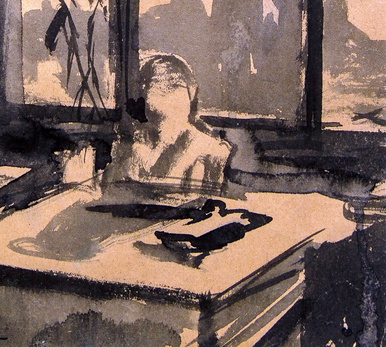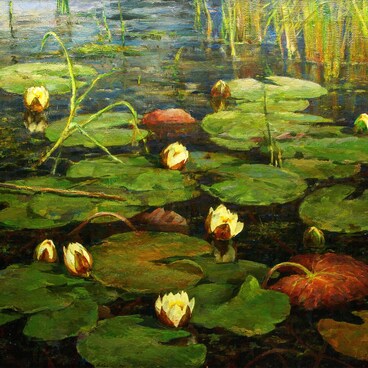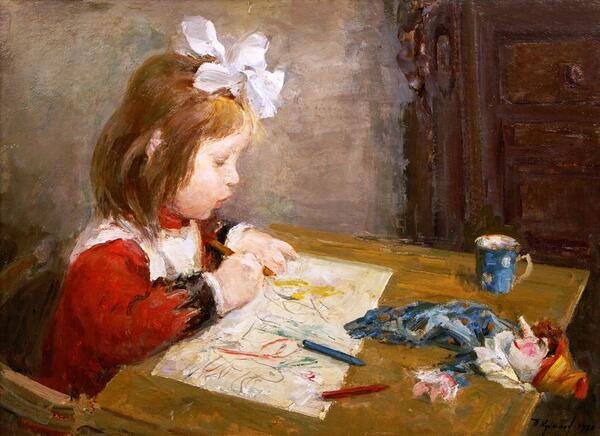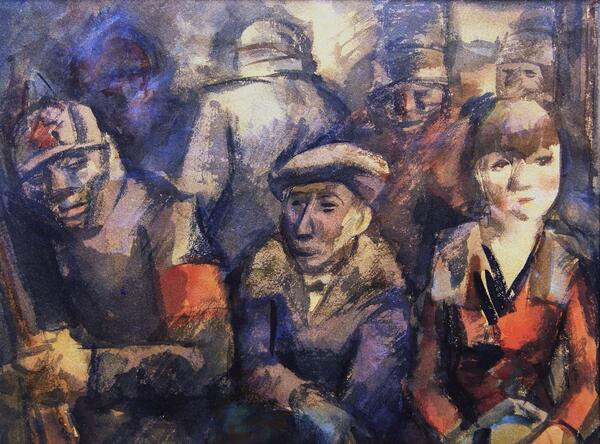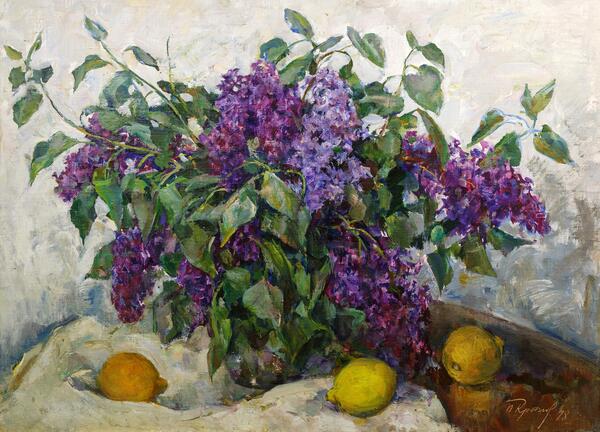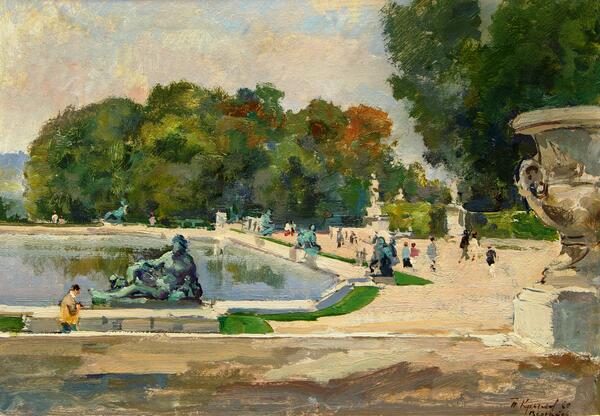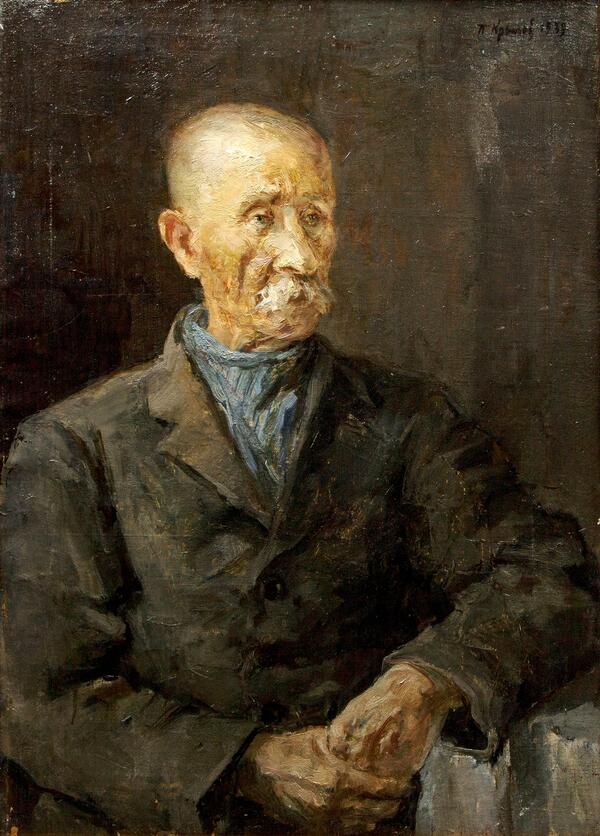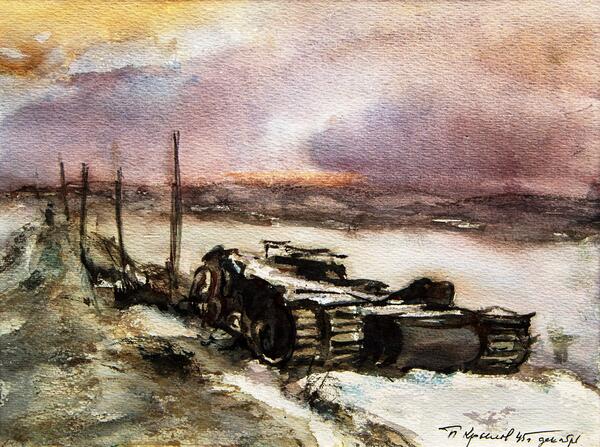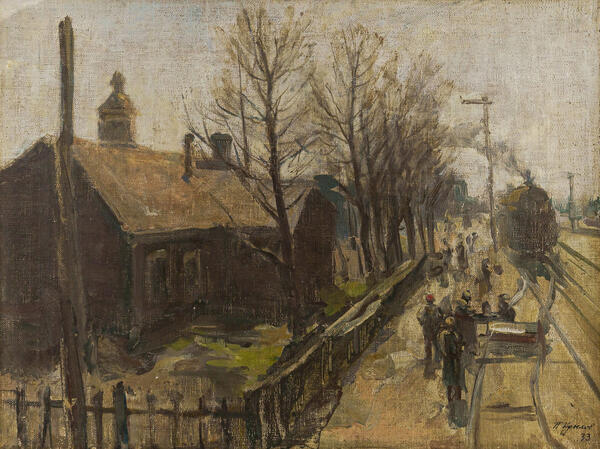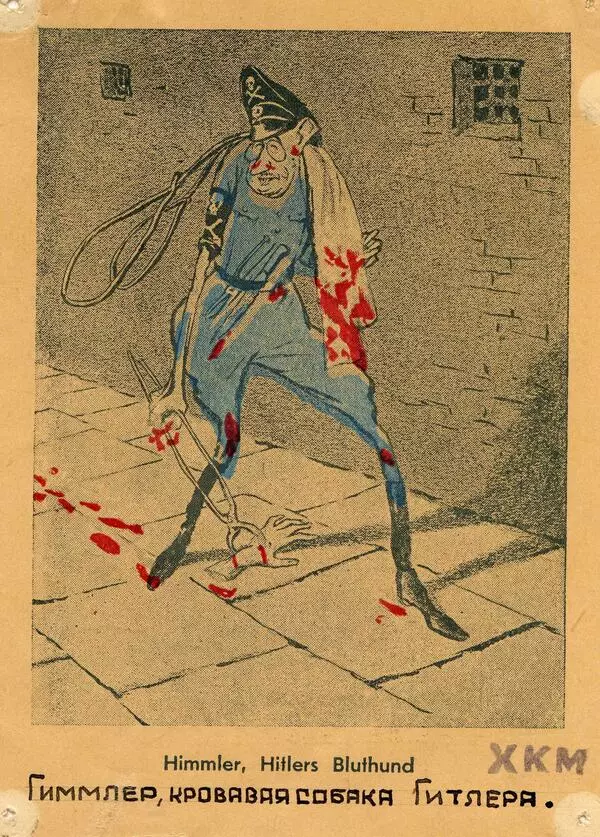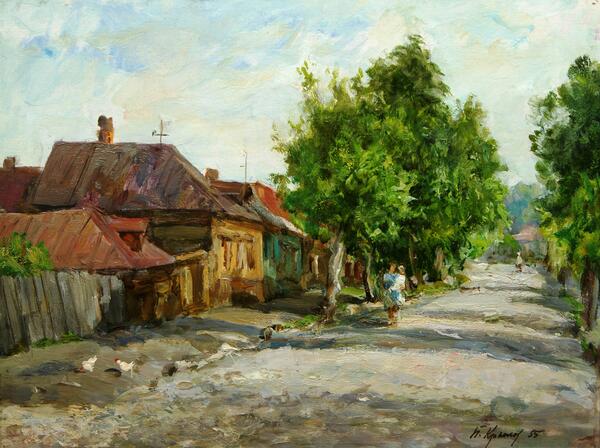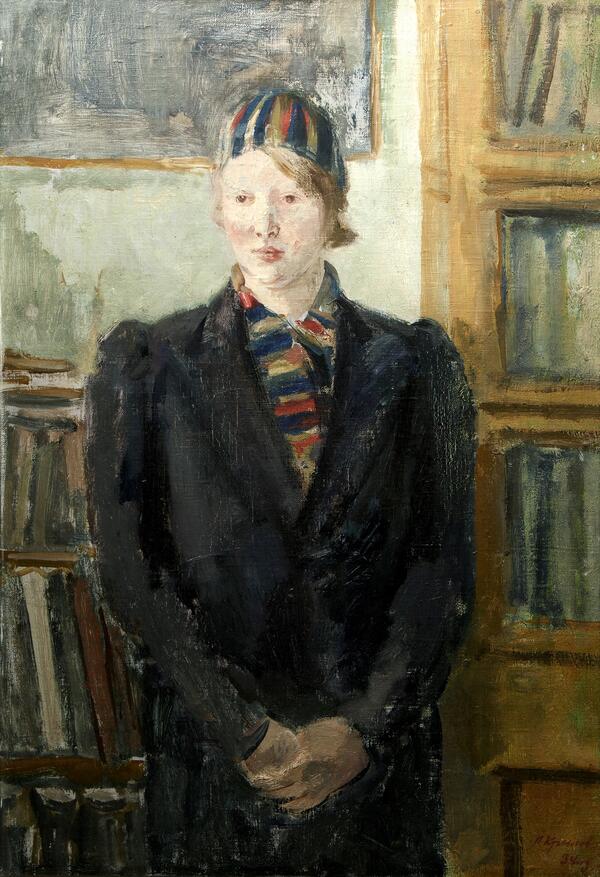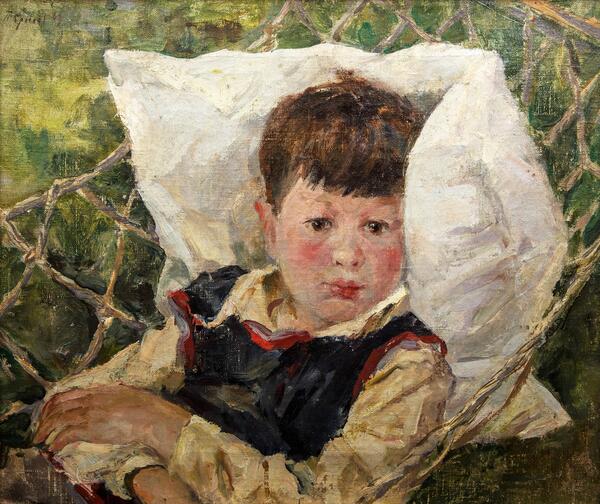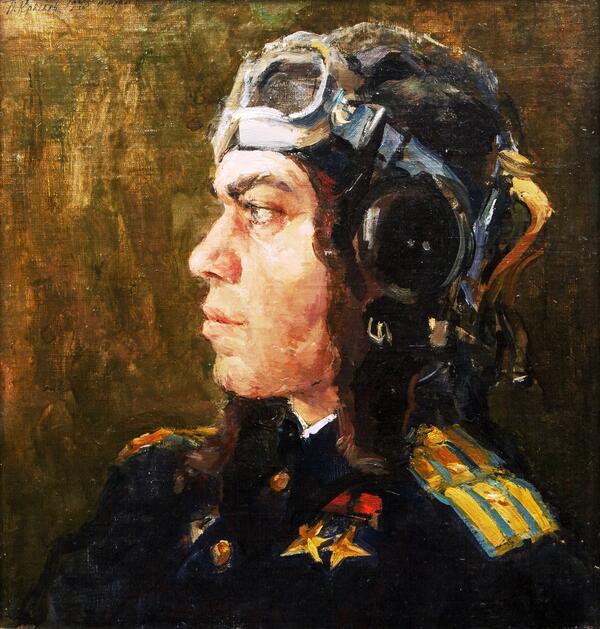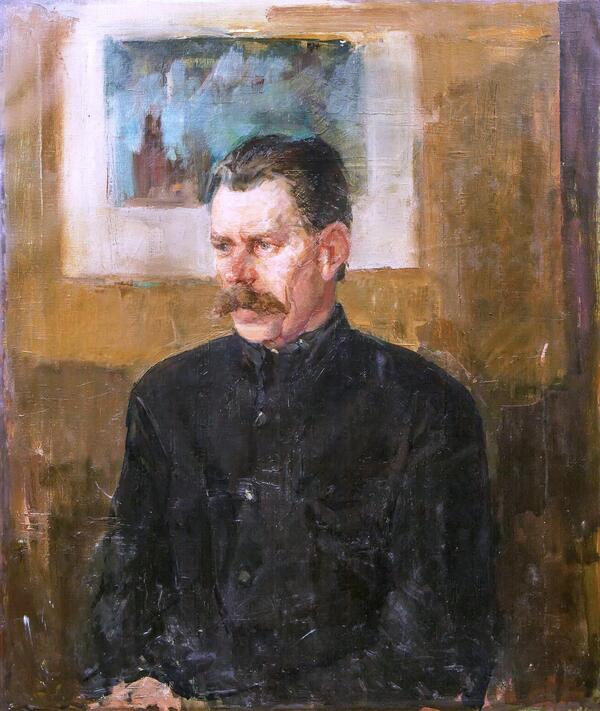“Khamovniki Gallows” is an artistic copy Porfiry Krylov made of his own work. He presented it as his qualification work when graduating from the painting department of the Higher Art and Technical Workshops in 1927.
The narrative in the painting revolves around the events of the Russian Revolution of 1905. Gendarmes arranged a gallows in one of the sheds of the fire station in Khamovniki district — a “davilka”. More than 30 participated in the Moscow uprising of 1905, and were hanged there. At the end of the 1920s, the trial of the executioners took place.
The mood of the painting is tragic: an execution has just taken place. The hanged man is taken out of the noose and his body is laid to the side. The artist placed the figure of the executioner in the depths of the torture chamber. The bailiff is in the foreground writing a report on the execution. Next to him is a doctor who has barely finished examining the body.
Each character in the painting is very distinct and their appearance, gestures, costume and mood are very well-thought out. The murky grayish-green color defines the gloomy atmosphere of the painting: it seems to suffocate the viewer, creating a feeling of painful stuffiness and a desire to leave the cursed casemate as soon as possible.
There is also a philosophical side to the painting — the “Khamovniki Gallows” makes one think about the cruelty and injustice in the world. The face of the executed man is hidden; he was a young revolutionary who dreamed of happiness and equality for all people. He was not really a criminal in the usual sense of the word, but a person who suffered for his beliefs. Perhaps the most tragic thing in the picture is the indifferent cruelty of the participants of the execution
Boris Akunin wrote about the trial of the executioners who hanged convicts in the Khamovniki police station in 1907–1910 in the book “The Other Way”:

